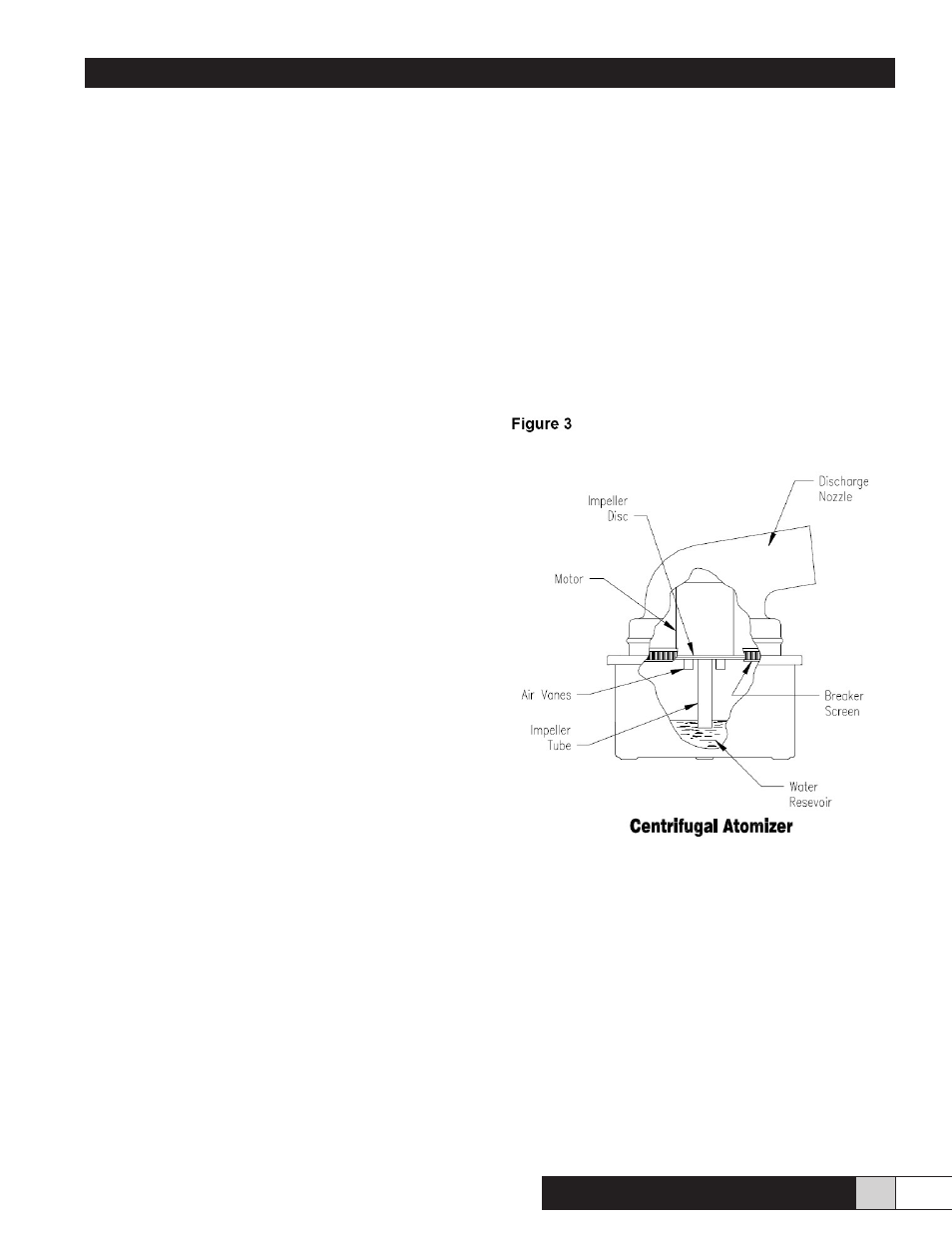Herrmidifier Load Calculator User Manual
Page 17

L o a d C a l c u l a t i o n G u i d e
L o a d C a l c u l a t i o n G u i d e
17
w w w. h e r r m i d i f i e r- h v a c . c o m
SECTION IV TYPES OF EQUIPMENT
There are basically three types of humidification equip-
ment: Atomizing, Evaporative and Steam. The type of hu-
midification equipment used for any application is extremely
important and should be carefully selected with regards to
the level of R.H. desired to be maintained, the amount of
moisture needed to be added, services available, use of the
area being humidified, feed water equality and energy ef-
ficiency. Following is an overview of each type of humidifica-
tion equipment.
Atomization
This type of humidification equipment uses either CEN-
TRIFUGAL or PNEUMATIC forces to break water up into a
fine mist which is discharged into the atmosphere where it
evaporates to the vapor state. This process is endothermic
and takes latent heat from the air to evaporate the mist. (1
000 BTUs are required to evaporate one pound of water.)
Because atomization takes only enough heat from the air
as is needed to evaporate the water, it is usually a very ef-
ficient process. Atomizing equipment must be able to deliver
tiny droplets of a consistent size over a relatively narrow size
range. No large droplets should fall before turning to the va-
por state as this may cause damaged goods, wet floors, etc.
This puts physical limitations on capacities that can be re-
alized and/or successfully applied in given situations under
known conditions.
Every droplet in the fine mist has the same chemical makeup
as the water supplied to the equipment. When the droplets
evaporate to the vapor state, minerals are left behind in the
form of a white powder-referred to as Mineral Fallout. Use of
softened water does NOT alleviate this problem because in
softening one mineral is simply being substituted for another.
Demineralizers and use of the Reverse Osmosis Process
will remove the minerals and prevent Mineral Fallout. This
Mineral Fallout is usually not a problem except that it is unde-
sirable in certain applications such as computer rooms and
hospitals. There are basically two types of atomizing equip-
ment: Centrifual and Pneumatic.
CENTRIFUGAL ATOMIZERS pump water from a reservoir
onto a rotating disc impeller. The centrifugal force created
throws the water against a breaker screen
to form tiny droplets. Some type of air moving method, usu-
ally air vanes, is needed to pick up the mist and convey it into
the air space to be humidified. This type of equipment works
well in the lower capacity ranges (a few pounds of water per
hour) both as free standing or installed in an air handling
system. Larger capacities run into droplet size problems. If
this type of equipment is used in a dirty atmosphere serious
clogging problems result and considerable maintenance is
required to keep its efficiency at a satisfactory level. Also,
since there is usually a reservoir and air movement through
the equipment, algae formation and drying minerals can
result in clogging and the need for frequent maintenance.
Water spray nozzles that do not use air are considered to
be centrifugal atomizers and are NOT suited for humidifying
since their droplet size is seldom small enough to prevent
wetting of floors and materials.
PNEUMATIC ATOMIZERS use air pressure to break up wa-
ter into a fine mist. A much smaller droplet size in the mist is
more readily attained with pneumatic atomizers
